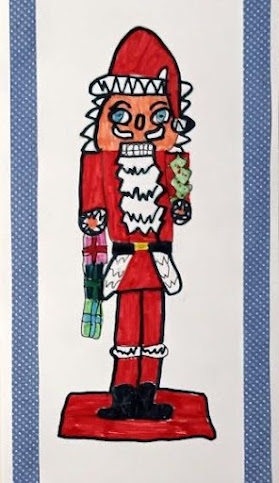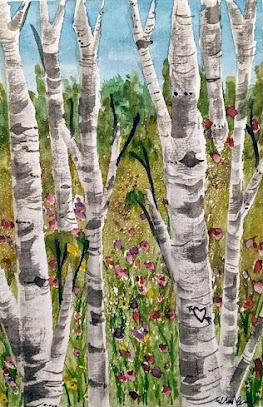Okay, at first this may not seem like an "art" related post.
But it is about creativity and it can include ART, if you so choose - we did!
Backstory:
It was HOT outside. The Summer Olympics were going on in Paris. Our teenage grandson was visiting, but we were pretty much stuck inside. We could watch the Olympics on TV, of course. But we needed more! What could we do to celebrate the Olympics??? How could we participate in the spirit of the Games? Wait... GAMES???
I quickly came up with a plan - why not have our own Olympics within the confines of our nice air-conditioned house? The grandson loves board games. In fact, he is always willing to put away his electronic device to play a board game. So, (drumroll, please)...
Introducing, the
Summer Board Game Olympics!
Here's how we did it:
We found a white board and markers for our medal count board.
We dug out a bunch of games to choose from for our Olympics competition schedule.
We assembled two card tables in front of the big screen TV, because of course the Olympics would be on in the background and we would want to pause to watch our favorite events!
We had plenty of ice water and delicious snacks available at all times - so we could keep our strength up throughout a strenuous day of going-for-the-gold!
We gave medals to the first, second, and third place winners of each game - as shown on the medal count board. As an option, you can determine the all-around Medal winners of your Olympics by adding up each person's medal counts: Gold Medals get three points, Silver Medals two points, and Bronze Medals one point. In our Olympics: P got the all-around Gold for 17 points, R got the Silver for 11 points, and S got the Bronze for 8 points.
More tips:
Choose a good variety of games for your Olympics. We chose two very different word games (Boggle
and Take Two), a dice game (Scratch), a chance/math game (Shut the Box), a silly game (Tiddlywinks), and a drawing game (Pictionary). Choose games from your own collection that everyone enjoys! Shown in the above picture are some of the other games we considered but that didn't make the cut.
Remember to choose games that won't take all day. Quick and fun really worked for us. If you end up not having time for a game, just cross it out (we didn't play Yahtzee).
Don't choose two-player games (Othello, checkers, etc.) unless you are willing to go more than one round, tournament style.
 |
| More art and drawing games |
Set up the tables for the number of your players. Have an extra table available in case you need more room for some games, less for others. Example: we needed lots of space for our
Take Two game (an all time favorite): two card tables for three people. However, we only needed one table for Boggle so everyone could easily see the letters.
Make sure you have all of your equipment for your chosen games. I found individual white boards for our Pictionary game and needed a small carpet scrap to cushion the table for Tiddlywinks.
In keeping with the ART theme of this weblog, you can certainly include as many art games as you wish. In fact, you could even hold an Art Game Olympics!
Of course, you can hold your own Board Game Olympics anytime you like. No need to wait four more years!







































